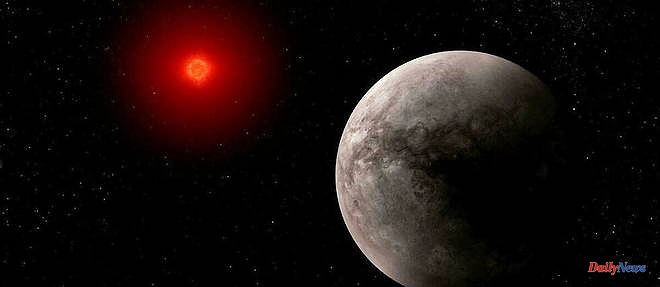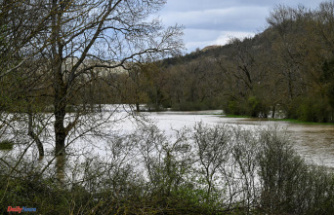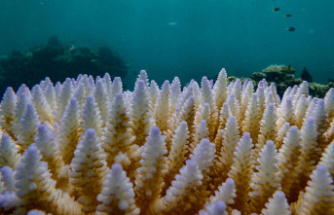For the first time in history, researchers have managed to detect light coming from an exoplanet close to the Earth, both rocky and relatively temperate. In this case, in a small band of wavelengths corresponding to its thermal emission, in other words to the heat it gives off in space.
This feat is the work of an international team of six scientists, including three French from the CEA (Commissariat for Atomic Energy and Alternative Energies). To achieve this, they used the exceptional capabilities of the James-Webb space telescope and, in particular, its MIRI (medium infrared) instrument, largely designed at the CEA in Paris-Saclay.
"We used a technique called secondary eclipse photometry. This consists of observing the star when it is no longer in transit in front of its star, night side towards the Earth, but on the side of it, showing us its day side as much as possible before disappearing behind the star", explains to Point Elsa Ducrot, astrophysicist at the CEA and co-author of the new study published in the famous journal Nature. "In this way, we can tell the difference between when we receive light from the star with the light emitted by the day side of the planet and when we only receive light from the star, the planet being hidden behind her,” she says.
One subtraction later, the exoplanet's pale glow is extracted from the intense stellar radiation! Achieving this result with a body as small and dimly luminous as a rocky planet in our own solar system is in itself extremely promising. After detecting exoplanets in spades without knowing much about them, we are finally about to enter the era of characterizing these distant worlds!
Also, the planet the researchers tried out on, called Trappist-1b, isn't just any exoplanet. Slightly larger than the Earth for an equivalent mass, it belongs to a planetary system that fascinates scientists. That of the star Trappist-1 located just over 40 light years from Earth, in the constellation Aquarius. Around this red dwarf orbit no less than seven rocky planets, three of which are located in the habitable zone of this star, much smaller and colder than our Sun, without necessarily being less capricious...
Indeed, red dwarfs, which are by far the most numerous stars in our galaxy, have the reputation of being particularly active, at least during the first part of their existence. They then emit intense flows of particles capable of attacking, among other things, the atmospheres of the planets that surround them. This is why, if many exoplanets located in the habitable zone of these stars (the distance interval where the temperature allows the presence of water in liquid form) have been detected, scientists are wondering about their real capacity to harbor life.
What do the results of this new study say? It obviously does not provide a definitive answer to this question. It suggests, however, that exoplanet Trappist-1b - the star's closest known planet in the system, located outside its habitable zone - may not have (or no longer) have an atmosphere. "Thanks to our measurements, we have an idea of the temperature of the planet at the observed wavelengths (around 230°C, dayside). So we were able to compare it with what different models predict: including a model with a carbon dioxide (CO2) rich atmosphere, a model with an oxygen (O2) rich atmosphere, and a model with no atmosphere at all. The most compatible is that of a bare pebble, without an atmosphere, which simply re-emits the heat it absorbs,” says Elsa Ducrot.
"But you have to be careful. All we can say, for now, is that Trappist-1b does not have a CO2-rich atmosphere. Other observations, in other wavelengths, will be needed to ensure that it is truly devoid of any atmosphere. Which is by no means a problem since the planets of the Trappist-1 system are among the favorite targets of the new James-Webb space telescope which is far from having finished scrutinizing them. These first results only open promising perspectives for the study of other planets of the same system located in the "habitable zone" where the conditions are more favorable for the appearance of life as we know it on Earth.












